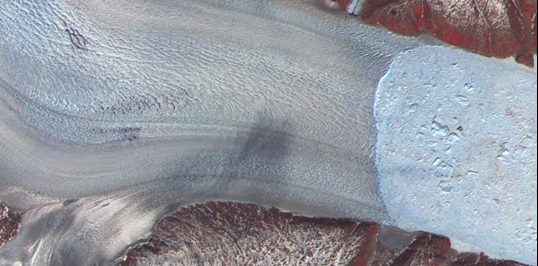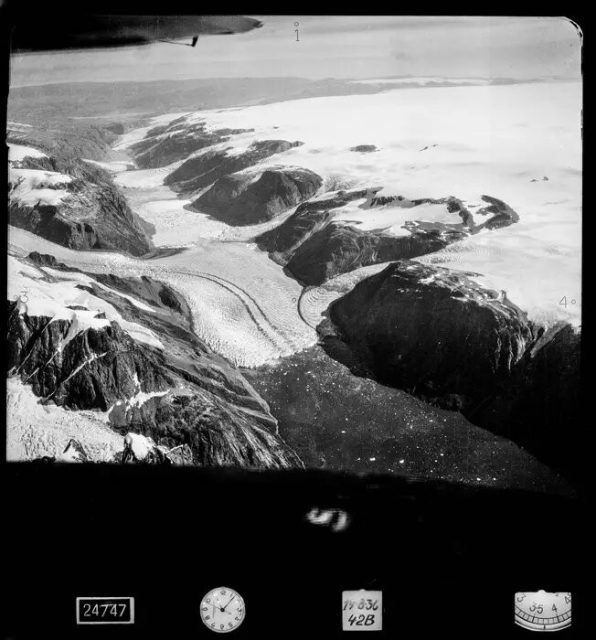Greenland ’s glaciers are melting at an unprecedented pace
In the largest survey of its kind ever conducted researchers from the University of Copenhagen firmly established a fivefold increase in the melting of Greenland ‘s glaciers over the last 20 years.

Using both satellite imagery and old aerial photos from the Danish National Archives, researchers from the University of Copenhagen firmly establish 1 that Greenland’s glaciers are melting at an unprecedented pace. Melting has increased fivefold in the past 20 years. The study eliminates any lingering doubts about the impact of climate change on Greenland’s more than 20,000 glaciers.
Based on the most comprehensive monitoring of Greenland’s glaciers to date, Danish researchers have been able to cast aside any doubt regarding the impact of climate change on the planet.
Their new results document that, compared to the 80s and 90s, when glaciers shrank by an average of about five meters a year, melting has increased fivefold during the past 20 years, so that today, 25 meters per year are lost.
The new study shows the response of Greenland’s glaciers to climate change over a 130-year period. The past two decades stand out in particular, as melting during this period increased even more dramatically.

A number of studies in recent years have shown that Greenland’s largest glaciers are under massive pressure due to climatic changes and rising temperatures. However, doubts remained about the extent of the melting glaciers, of which there are approximately 22,000 in Greenland, partly due to inadequate measurement methods. But any doubts that may have existed before have now been dispelled by the Danish researchers.
Previous doubts were warranted to a certain extent. Indeed, the possibilities of investigating and documenting the extent to which glaciers melted away over extended periods of time were limited prior to the era of satellite imagery.
For example, only one of Greenland’s approximately 22,000 glaciers was continuously monitored using so-called mass balance measurements, which began in the mid-1990s. At the same time, there were areas of Greenland covered by glacier that seemed unaffected by rising temperatures just a few years back.
To gain a full overview, the researchers closely studied 1,000 of Greenland’s glaciers, a representative amount for the entire country. They tracked the melting of glaciers over the past 130 years using satellite images and 200,000 old aerial photos from the Danish National Archives, which had previously been used to make maps.
While the researchers claim that there is no longer much reason to look into whether glaciers are melting or not, the development still needs to be closely monitored. Over the past twenty years, melting glaciers have contributed to about 21% of observed sea level rise.
Paradoxically, the melting of glaciers in Greenland will lead to a lack of water. Glaciers will reach a point at which they become so small that meltwater rivers will be diminished or disappear altogether. Among other things, this means that Greenland’s ecosystems will change and that renewable energy will face unforeseen hurdles.
References
- Larocca, L.J., Twining–Ward, M., Axford, Y. et al. Greenland-wide accelerated retreat of peripheral glaciers in the twenty-first century. Nat. Clim. Chang. (2023). https://doi.org/10.1038/s41558-023-01855-6 ↩